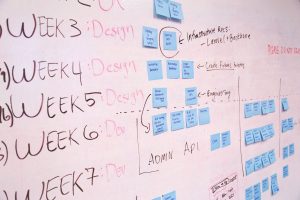The Advantages of Using AI Prompts for Software Development
Artificial intelligence (AI) has become a game-changer in numerous industries, and software development is no exception. With the advent of AI prompts, developers now have access to a powerful toolset that enhances various aspects of the software development lifecycle. This article explores the manifold benefits of utilizing AI prompts in software development, delving into how these cutting-edge solutions can dramatically transform efficiency, collaboration, learning, project management, and innovation.
Improved Code Quality and Efficiency
AI-Assisted Code Generation and Bug Fixing
One of the most significant advantages of AI prompts in software development is their ability to improve code quality and efficiency. By leveraging the capabilities of advanced AI algorithms, developers can generate clean, optimized code with minimal human intervention. Additionally, these prompts can automatically detect and fix bugs, reducing the time spent on tedious debugging tasks.
Reducing Human Error in Programming
Mistakes are inevitable in any human-driven process, and programming is no exception. By employing AI prompts, developers can significantly minimize the occurrence of human error. These intelligent systems can identify and rectify potential issues before they escalate, ensuring the delivery of reliable and high-quality software.
Faster Implementation of Best Practices and Design Patterns
AI prompts can facilitate the rapid adoption of industry best practices and proven design patterns, helping developers to create robust and maintainable software. By learning from a vast repository of code examples, these prompts can suggest optimal solutions for a given problem, streamlining the development process and enhancing overall code quality.
Enhanced Collaboration and Communication
Real-Time Code Review and Feedback
AI prompts can offer real-time code review and feedback, enabling developers to collaborate more effectively. These systems can detect potential issues, suggest improvements, and even provide alternative solutions, fostering a more efficient and iterative development process.
Facilitating Team Collaboration Through AI-Generated Insights
The insights generated by Best AI prompts can also serve as a catalyst for improved team collaboration. By identifying areas that require attention or improvement, these tools can help developers work together to address challenges and achieve common goals, fostering a more cohesive and productive team dynamic.
Bridging the Gap Between Technical and Non-Technical Team Members
AI prompts can help bridge the communication gap between technical and non-technical team members by providing clear, concise explanations of complex concepts. This improved understanding allows for more effective collaboration and ultimately leads to better software outcomes.
Personalized Learning and Skill Development
AI-Powered Learning Recommendations for Developers
By analyzing individual strengths, weaknesses, and learning preferences, AI prompts can offer tailored learning recommendations to help developers enhance their skill sets. This personalized approach accelerates the learning process and empowers developers to reach their full potential.
Accelerated Onboarding and Training Processes
AI prompts can also play a pivotal role in streamlining onboarding and training processes for new team members. By offering personalized guidance and resources, these tools can reduce the time it takes for newcomers to become fully integrated and productive members of the team.
Adapting to Individual Learning Styles and Preferences
Different people have different learning styles, and AI prompts can adapt their recommendations accordingly. This tailored approach ensures that developers can learn and grow at their own pace, maximizing the effectiveness of their skill development efforts.
Streamlined Project Management
AI-Driven Task Allocation and Prioritization
AI prompts can optimize project management by intelligently allocating tasks and prioritizing work items based on factors such as complexity, resource availability, and deadlines. This data-driven approach ensures that teams can work more efficiently and effectively, ultimately leading to better software outcomes.
Estimating Project Timelines and Resource Requirements
By analyzing historical project data, AI prompts can provide more accurate estimates of project timelines and resource requirements. These insights enable project managers to make more informed decisions, allocate resources more effectively, and mitigate potential risks, leading to greater project success.
Identifying Potential Risks and Bottlenecks
AI prompts can also help project managers identify potential risks and bottlenecks early in the development process. By proactively addressing these issues, teams can avoid costly delays and ensure a smoother, more efficient project execution.
Scalability and Innovation
Adapting to New Technologies and Frameworks
The software development landscape is constantly evolving, and staying up-to-date with the latest technologies and frameworks is crucial for success. AI prompts can rapidly adapt to these changes, providing developers with the necessary tools and resources to stay ahead of the curve and maintain a competitive edge.
Leveraging AI for Prototype and Proof-of-Concept Development
AI prompts can also accelerate the process of prototype and proof-of-concept development. By generating code snippets, UI elements, and functional components, these tools can help developers quickly create and test new ideas, fostering a culture of innovation and continuous improvement.
Driving Innovation Through the Exploration of Novel Solutions
AI prompts can inspire developers to explore novel solutions and approaches, pushing the boundaries of what’s possible in software development. By offering unique, AI-generated insights and suggestions, these tools can inspire creativity and drive innovation in the development process.
Conclusion
The future of AI prompts in software development is bright, as these powerful tools continue to revolutionize the way developers work, collaborate, and innovate. As technology continues to evolve, the integration of AI prompts into the software development lifecycle will become increasingly indispensable. By embracing the best AI tools available, developers can harness the power of artificial intelligence to create high-quality software, streamline workflows, and stay ahead of the competition in the fast-paced tech industry.


 Project management isn’t simple. People, resources, budgets and time need to work together. If something isn’t in place, it can slow down productivity and cost you more money. This post will show you how to manage a construction project successfully by using the right tools and staying organized. Check out our tips for successful construction project management below.
Project management isn’t simple. People, resources, budgets and time need to work together. If something isn’t in place, it can slow down productivity and cost you more money. This post will show you how to manage a construction project successfully by using the right tools and staying organized. Check out our tips for successful construction project management below.

